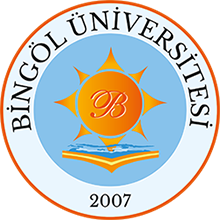BASINÇLI DOĞALGAZ HATLARINDA VORTEKS TÜPÜNÜN ISITMA AMAÇLI OLARAK KULLANILABİLİRLİĞİNİN DENEYSEL OLARAK ARAŞTIRILMASI
Abstract
ÖZET
Bu çalışmada karşıt akışlı Ranque-Hilsch vorteks tüpünün doğalgaz hatlarında ısıtma amaçlı olarak kullanılabilirliği deneysel olarak araştırılmıştır. Vorteks tüpünün doğalgaz hattında aktif kullanımının zorluğu sebebi ile deneylerde basınçlı hava kullanılmıştır. Farklı giriş basıncı, debi miktarı, sıcak çıkışta farklı debi ayarı ve farklı vorteks üreteçleri için ısıtma ve sogutma çıkışlarından veriler alınmıştır. Vorteks tüpünün ısıtma amaçlı olarak kullanılabileceği en uygun basınç, debi ve ayar parametreleri araştırılmıştır. Kullanılan çalışma parametrelerinden biri olan basınç değerleri vorteks tüpünün çalışma basınç aralığı da dikkate alınarak 5.5-9.5 bar aralığında 1 bar arttırılarak değiştirilmiştir. Isınan çıkıştaki debi kontrol vanası farklı açıklık pozisyonlarının etkisini görmek amaçlı olarak farklı Kontrol Vanası Açıklık Pozisyonları(KVAP) için veriler elde edilmiştir. Vorteks üreteç etkisini görmek amaçlı olarak 40-H, 30-C, 10-C üreteçleri kullanılmıştır. Vorteks tüpünde değiştirilen bu parametreler sonucu ısınma etkileri deneysel olarak incelenmiştir. Sıcak akışkan elde edilmesi amaçlı olarak kullanılması durumunda düşük basınç(5.5bar) ve KVAP 4’te 30-C üreteçlerinin daha iyi; KVAP 7, 9, 12 ve 7.5, 9.5 bar basınç’ta 40-H üretecinin daha iyi performans gösterdiği anlaşılmıştır. 40-H üretecinin ısıtma amaçlı olarak daha geniş parametrelerde kullanılabileceği, bununla birlikte 30-C üretecinin de ısıtma amacı ile kullanılabileceği anlaşılmıştır. 10-C üretecinin ise daha düşük sıcaklıklarda ısıtma yapabileceği anlaşılmıştır. Buradan her üretecin kullanım amacına ve kullanılan akışkana göre ısıtma veya soğutma optimum çalışma basınçları, farklı çıkış debisi (farklı KVAP için) optimum ya da maksimum giriş debisi ve optimum giriş basınçların kullanılmasının önemli olduğu anlaşılmaktadır.
Vorteks tüpleri doğalgaz basınç istasyonlarında pilot ısıtıcı denilen, yani bir eşanjör şeklinde kullanılabilmelerinin yanı sıra, uygulamada direkt olarak kısma ve ısıtma amacı ile de kullanılabileceği kanısına varılmıştır. Direkt olarak kullanılması durumunda hem bir basınç regülatörü gibi basınç düşürme amaçlı, hem de bir ısıtıcı amaçlı olarak kullanılması mümkündür. Ancak uygulamada bir takım güçlükler söz konusudur. Bunlardan biri vorteks tüpünün sisteme direkt bağlanarak basınç ve sıcaklık düşürme amaçlı olarak kullanılması için daha yüksek basınçlarda çalışan vorteks tüplerinin uygun imalat araştırmalarının yapılması gereklidir. Mevcut durumda doğalgaz RMS-A istasyonlarındaki yüksek basınçta direk kullanımına uygun yüksek giriş basınç vorteks tüp imalatı bulunmamaktadır. İkincisi sistemde direkt kullanılması durumunda soğuk uçtan çıkan gaz miktarının düşürülebilecek en alt düzeye düşürülmesi için birden fazla vortekslerin seri bağlanması veya ilk vorteks sonrası soğuk ve sıcak gazın karıştırılarak doğalgaz hattına verilmesi gibi çözüm yollarının denenmesi, ilgili çözüm senaryolarına ait enerji/ekserji ve ekonomik analizlerinin yapılması gerekmektedir. ABSTRACT
In this study, the usability of the counter-flow Ranque-Hilsch vortex tube for heating in natural gas lines was investigated experimentally. Compressed air was used in the experiments due to the difficulty of active use of the vortex tube from the natural gas line. Data were taken from the heating and cooling outlets for different inlet pressure, flow rate, different outlet flow rate setting and different generators type. The most suitable inlet pressure, flow rate, generatr and adjustment parameters that the vortex tube can be used for heating have been investigated. Pressure values, one of the operating parameters used, were changed by increasing 1 bar in the range of 5.5-9.5 bar, taking into account the operating pressure range of the vortex tube. Data were obtained for different Control Valve Opening Positions (KVAP) to see the effect of different opening positions of the flow control valve at the heated outlet. In order to see the vortex generator effect, 40-H, 30-C, 10-C generators were used. As a result of these parameters changed in the vortex tube, the warming effects were investigated experimentally. If it is used for the purpose of obtaining hot fluid, 30-C generators are better at low pressure (5.5bar) and KVAP 4; It has been found that the 40-H generator performs better at KVAP 7, 9, 12 and 7.5, 9.5 bar pressure. It has been understood that the 40-H generator can be used for heating purposes with wider parameters, however, the 30-C generator can also be used for heating purposes. It has been understood that the 10-C generator can heat at lower temperatures. From this, it is understood that it is important to use optimum or maximum inlet flow rates and optimum inlet pressures for each generator, depending on the purpose of use and the fluid used.
It has been concluded that vortex tubes can be used in natural gas pressure stations as a pilot heater, that is, as a heat exchanger, as well as for direct throttling and heating purposes in practice. In case of direct use, it can be used both as a pressure regulator for pressure reduction and as a heater. However, there are some difficulties in practice. One of them is that the vortex tube should be directly connected to the system and used for pressure and temperature reduction purposes, appropriate manufacturing researches for vortex tubes operating at higher pressures should be made. Currently, there is no high inlet pressure vortex tube manufacturing suitable for direct use at high pressure in natural gas RMS-A stations.Secondly, in case of direct use in the system, solutions such as connecting more than one vortex in series or mixing cold and hot gas after the first vortex should be tried in order to reduce the amount of gas coming out of the cold end to the lowest level that can be reduced. Also energy/exergy and economic analyzes of the relevant solution scenarios are required.
Collections
- Makine Mühendisliği [24]

DSpace@BİNGÖL by Bingöl University Institutional Repository is licensed under a Creative Commons Attribution-NonCommercial-NoDerivs 4.0 Unported License..













